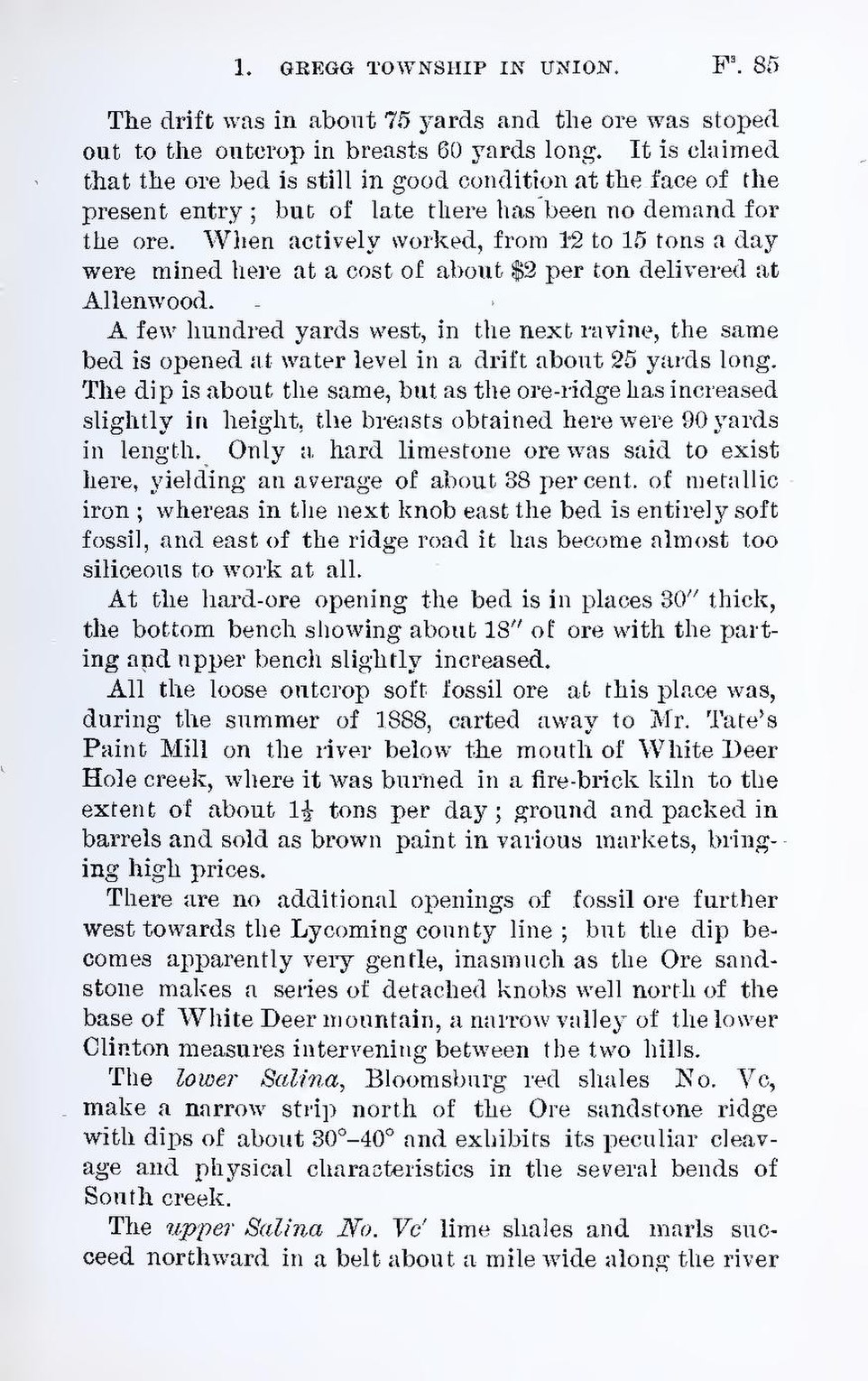The drift was in about 75 yards and the ore was stoped out to the outcrop in breasts 60 yards long. It is claimed that the ore bed is still in good condition at the face of the present entry; but of late there has been no demand for the ore. When actively worked, from 12 to 15 tons a day were mined here at a cost of about $2 per ton delivered at Allenwood.
A few hundred yards west, in the next ravine, the same bed is opened at water level in a drift about 25 yards long. The dip is about the same, but as the ore-ridge has increased slightly in height, the breasts obtained here were 90 yards in length. Only a hard limestone ore was said to exist here, yielding an average of about 38 per cent. of metallic iron; whereas in the next knob east the bed is entirely soft fossil, and east of the ridge road it has become almost too siliceous to work at all.
At the hard-ore opening the bed is in places 30″ thick, the bottom bench showing about 18″ of ore with the parting and upper bench slightly increased.
All the loose outcrop soft fossil ore at this place was, during the summer of 1888, carted away to Mr. Tate’s Paint Mill on the river below the mouth of White Deer Hole creek, where it was burned in a fire-brick kiln to the extent of about 14 tons per day; ground and packed in barrels and sold as brown paint in various markets, bringing high prices.
There are no additional openings of fossil ore further west towards the Lycoming county line; but the dip becomes apparently very gentle, inasmuch as the Ore sandstone makes a series of detached knobs well north of the base of White Deer mountain, a narrow valley of the lower Clinton measures intervening between the two hills.
The lower Salina, Bloomsburg red shales No. Vc, make a narrow strip north of the Ore sandstone ridge with dips of about 30°-40° and exhibits its peculiar cleavage and physical characteristics in the several bends of South creek.
The upper Salina No. Vc′ lime shales and marls succeed northward in a belt about a mile wide along the river
